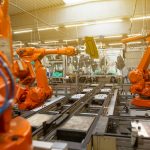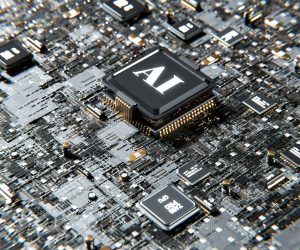The automotive industry is experiencing a seismic shift as autonomous cars transition from science fiction to a practical reality. Powered by advancements in artificial intelligence (AI), machine learning, and sensor technology, these vehicles are redefining how we think about transportation. With the promise of increased safety, efficiency, and accessibility, autonomous cars are not only transforming the way people travel but are also reshaping the industry at every level—from car manufacturing and infrastructure planning to insurance and logistics.
The Technology Behind Autonomous Cars
At the core of autonomous vehicles (AVs) are cutting-edge technologies that allow them to perceive and navigate their surroundings without human intervention. Sensors such as LiDAR, cameras, radar, and ultrasonic systems collect real-time data about the environment, including traffic patterns, obstacles, and road conditions. This data is then processed by advanced AI algorithms, enabling the car to make decisions and adapt to dynamic situations, such as avoiding pedestrians or merging into traffic.
These systems are categorized into five levels of autonomy, ranging from Level 1 (basic driver assistance) to Level 5 (fully autonomous with no human input). While most vehicles on the road today feature Level 2 or 3 autonomy—offering partial self-driving capabilities like adaptive cruise control and lane centering—the industry is actively working toward achieving Level 5 autonomy.
Safety Revolution
One of the most significant ways autonomous cars are changing the industry is by improving road safety. Human error accounts for over 90% of traffic accidents worldwide, with issues like distracted driving, speeding, and impaired judgment leading to catastrophic outcomes. Autonomous vehicles, equipped with sophisticated sensors and fail-safe systems, eliminate these human vulnerabilities.
For example, self-driving cars have the ability to react faster to potential hazards, maintain consistent speeds, and adhere to traffic rules with precision. Tesla, Waymo, and other industry leaders are demonstrating how autonomous technologies can significantly reduce collision rates. In the long term, fewer accidents could lead to lower insurance premiums and reduced strain on emergency response systems, creating a ripple effect throughout society.
Transforming Mobility
Autonomous cars are redefining mobility by offering new levels of accessibility and convenience. Ride-hailing services like Uber and Lyft are already testing autonomous fleets, paving the way for affordable, driverless transportation. These vehicles can operate 24/7, providing consistent service without the limitations of human drivers.
Moreover, AVs have the potential to improve mobility for individuals who cannot drive, such as the elderly, people with disabilities, and those without licenses. By removing barriers to transportation, autonomous cars are fostering greater independence and inclusivity.
This shift toward shared, autonomous mobility also aligns with the concept of Mobility as a Service (MaaS), where users pay for transportation on demand rather than owning a vehicle. This model could significantly reduce traffic congestion, lower emissions, and optimize urban spaces by reducing the need for parking lots and private vehicles.
Economic and Industry Impact
The rise of autonomous cars is prompting a redefinition of traditional automotive business models. Automakers are evolving into tech companies, investing heavily in AI and software development to compete in this new landscape. Partnerships between automakers and tech giants, such as General Motors and Cruise or Ford and Argo AI, highlight the collaboration necessary to bring autonomous technology to market.
Beyond manufacturing, autonomous vehicles are reshaping other industries, such as logistics and delivery. Companies like Amazon and FedEx are testing autonomous trucks and drones to optimize supply chain efficiency. By reducing labor costs and increasing delivery speed, these innovations are revolutionizing e-commerce and freight industries.
Even the insurance industry is adapting to the autonomous revolution. With fewer accidents, insurers may need to rethink their models, shifting focus from individual drivers to manufacturers and software providers responsible for AV systems.
Challenges and Road Ahead
Despite the potential, autonomous cars face several challenges before they can achieve widespread adoption. Regulatory hurdles, cybersecurity concerns, and ethical dilemmas—such as how AVs should prioritize lives in unavoidable accidents—remain critical issues. Additionally, achieving public trust in fully autonomous systems will require rigorous testing and transparent communication about safety measures.
However, as technology improves and governments establish clearer regulatory frameworks, these challenges are expected to diminish. The transformative potential of autonomous vehicles makes them a cornerstone of the future automotive industry.
Conclusion
Autonomous cars are changing the automotive industry in profound ways, driving innovation and reshaping traditional systems. From enhancing road safety and accessibility to revolutionizing logistics and urban planning, their impact extends far beyond transportation. While challenges remain, the integration of autonomous vehicles promises a future where mobility is safer, smarter, and more efficient. As the industry continues to evolve, one thing is certain: the road ahead is autonomous.













